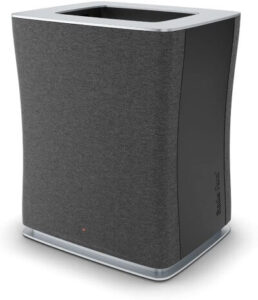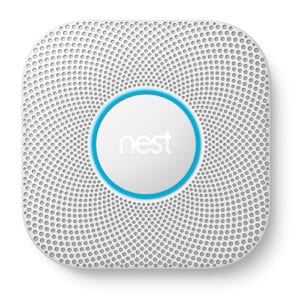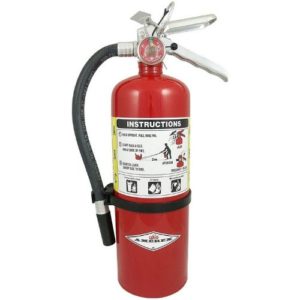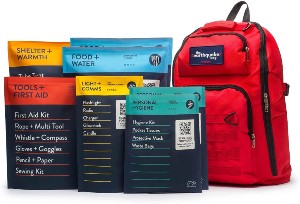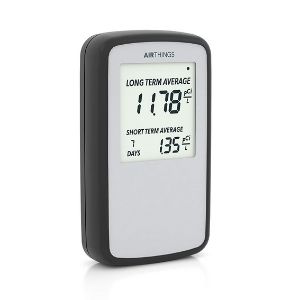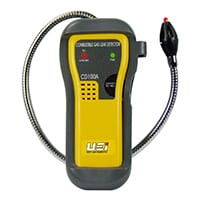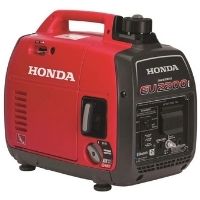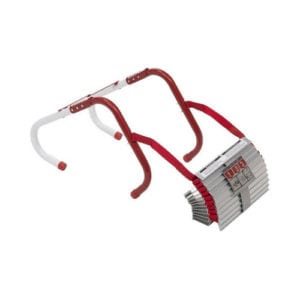The Truth About Black Mold—And How You Can Stay Safe
You’ve probably heard about the dangers of black mold, an alleged silent killer that hides in water damage and ceiling tiles. But what is black mold? And is it dangerous?
Black mold, or Stachybotrys chartarum, surfaces as blackish-green spots or blemishes. It lives on moist, cellulose-rich surfaces like fiberboard, drywall, and gypsum board. Black mold is most attracted to moisture, which is why it lives in previously-flooded homes, leaky pipe areas, or anywhere with water damage.
How to find and remove black mold
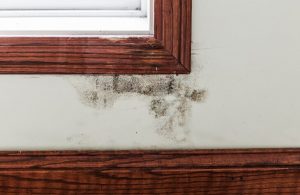
Is black mold dangerous?
The short answer is—not really. But that doesn’t mean you should keep black mold as a pet.
Everyone has different levels of tolerance to allergens like mold spores, but that’s all black mold is—an allergen.1 Those with asthma, respiratory allergies, or immune suppression will feel the effects of black mold’s mycotoxins more than most folks.
As one source put it, “Previous reports of ‘toxic mold syndrome’ or ‘toxic black mold’ have been shown to be no more than media hype and mass hysteria.” 2
But whether you feel black mold symptoms or not, it’s best to get rid of black mold as soon as you find it.
What are the symptoms of black mold exposure?
If you find black mold on your property, there’s no need to panic. But black mold presents more health risks to sensitive groups like those with respiratory conditions or immune conditions.
According to the Centers for Disease Control (CDC), black mold spores can generate cold- or flu-like symptoms such as:
- Stuffy nose
- Wheezing
- Skin and eye irritation
Longer exposure can cause more serious symptoms like:
- Fever
- Shortness of breath
- Nausea
So while black mold probably won’t kill you, it can make you feel sick and should be removed as soon as possible.
How does black mold get inside a house?
Mold spores find their way inside by hitchhiking on clothes, pet fur, and air currents into your home. But spores can’t get comfortable without plenty of water. This is why you’ll usually find black mold around water-damaged areas impacted by plumbing issues like floods or leaky pipes.
Materials like drywall, carpet, or gypsum board can soak up water, creating a perfect home for a black mold colony. If you find water damage at home, it’s crucial to remove all the affected materials to prevent mold from growing.
A water leak sensor can alert you to leaks in hard-to-reach places where the water damage would otherwise go unnoticed.
Black mold removal and cleaning
Mold remediation in stores, offices, or schools is best left to the pros. This also applies to household mold exceeding 10 square feet.
The contractors you choose should have insurance and licenses from organizations like the Institute of Inspection Cleaning and Restoration Certification (IICRC).
Homeowners can handle cleaning about 10 square feet (roughly 3 feet by 3 feet) of black mold on their own.3 If the patch is small enough, a combination of bleach, water, scrubbing, and ventilation should do the trick.
Before treating mold on your own, prioritize ventilation and protective gear.
Removing black mold is a tough and dirty job. If you or anyone in your family is sensitive to mold allergies, has respiratory or immune issues, trust the professionals.
Find a contractor in your area to get started.
Clear the air
Start the cleaning process by opening doors and windows to create a cross breeze. Dehumidifiers can also dry up the air and strip precious moisture away from mold growth.
Protect yourself
Even if you aren’t sensitive to mold, it’s nasty stuff. Be sure to wear protective eyewear, non-porous gloves, and a mask or respirator to protect yourself from getting sick.
Create a bleach mixture
If the black mold growth in your home is small enough for you to treat alone, a simple mixture of bleach and water can help. Add one cup of bleach to one gallon of water and apply it to the moldy spots. You can also find commercial black mold removal products.
Soak a paper towel in the cleaner and press it over the mold growth to dampen the area. Then start scrubbing. Avoid spraying moldy areas, since the droplets will collide with the mold spores and launch them throughout the room, making them easier to breathe in and harder to eradicate.
Be sure to dry the area thoroughly when you’re done.
Do NOT mix bleach with ammonia. This combination can create toxic fumes that are far more dangerous than any mold you’re trying to clean.
Black mold prevention
Nobody wants black mold in their home or building. Follow these rules to reduce the chances of mold on your property.
Watch for water
Amazon.com list price as of post date. Read full disclaimer.
Flooding, leaky pipes, and malfunctioning appliances can all cause water damage. Once water seeps into a porous surface like drywall, black mold and its cousins are likely to appear. Water detectors can help you catch faulty appliances and leaks early.
If you do find water damage in your home, treat it and cut off the problem area’s water source as soon as possible. You’ll also need to remove flooring, ceiling tiles, or any other material that was affected by the water.
Keep it clean and dry
Amazon.com list price as of post date. Read full disclaimer.
It never hurts to clean regularly. Make sure humid areas and rooms with plumbing get regular spot checks. Add mold and mildew removal products to your cleaning routine, especially for the bathroom and kitchen.
Mold thrives on moisture, so use dehumidifiers in humid areas of your home like bathrooms, basements, or closets. We like this Honeywell dehumidifier because it includes a built-in water pump for maintenance-free operation.
Aim to keep the humidity in your home below 50% to inhibit mold growth and other allergens like dust mites.
Trap airborne mold spores
Use an air purifier with a true HEPA filter to catch mold spores that wind up in your home.
Our favorites include the Stadler Form Roger series. The Roger Big handles entire homes up to 1,100 square feet, but the Roger Little is a more affordable one- or two-room alternative.
Final word on black mold: Best avoided—but not deadly
As for black mold’s toxic reputation, those with immune suppression, asthma, or other respiratory problems are most at risk of feeling ill.
It’s not likely that you’ll die from black mold poisoning because it’s just not that toxic. That said, you should act quickly if you find it in your home. The good news is it’s treatable, removable, and preventable.
Black mold FAQ
Not big at all. Spores from black mold or the Stachybotrys chartarum can range anywhere between 2 and 100 microns.4 To give you a better idea, the average human hair is about 70 microns wide.
Mycotoxins are naturally occurring toxic compounds found in pantry food like cereals, dried fruit, nuts, and spices. Exposure can occur from eating infected food or through the animals who ate contaminated food.5
We found a handful of sources recommending treatments like tea tree oil, grapefruit, and vinegar (just not in the same mixture). And while we haven’t tested these remedies out ourselves, many of the natural items listed have antifungal properties that could dry out black mold.
However, we recommend looking to the pros if you need help with a larger mold colony.
Black mold thrives on water and porous material like drywall or wood which commonly mix in areas like ceilings, basements, and crawl spaces. You can tell if your home has black mold by simply looking and sniffing. If you still aren’t sure, you can find black mold test kits online for around $40.
Related articles on SafeWise
Sources
- Centers for Disease Control, “Facts About Stachybotrys chartarum and Other Molds” Last reviewed December 2019. Accessed October 13, 2021.
- Andrea T. Borchers, Christopher Chang, and M. Eric Gershwin, Clinical Reviews in Allergy & Immunology, “Mold and Human Health: A Reality Check” Published March 2017. Accessed October 13, 2021.
- Environmental Protection Agency, “Mold Cleanup in Your Home” Accessed October 13, 2021.
- Environmental Protection Agency, “Mold Course Chapter 1: Introduction to Molds” Accessed October 13, 2021.
- World Health Organization, “Mycotoxins,” Published May 2018. Accessed October 13, 2021.
Disclaimer
Product prices and availability are accurate as of the date/time indicated and are subject to change. Any price and availability information displayed on Amazon at the time of purchase will apply to the purchase of this product. Safewise.com utilizes paid Amazon links.
Certain content that appears on this site comes from Amazon. This content is provided “as is” and is subject to change or removal at any time.
Compare the top home safety products
Data as of post date. Offers and availability may vary by location and are subject to change. SafeWise uses paid Amazon links.
†Google and Google Nest Secure are trademarks of Google LLC.
Recent Articles




The post The Truth About Black Mold—And How You Can Stay Safe appeared first on SafeWise.
Article source here: The Truth About Black Mold—And How You Can Stay Safe

